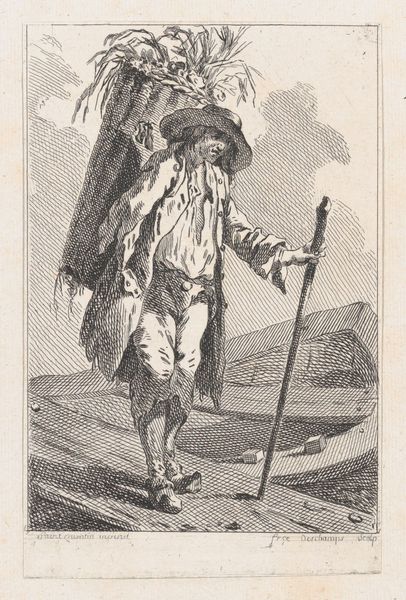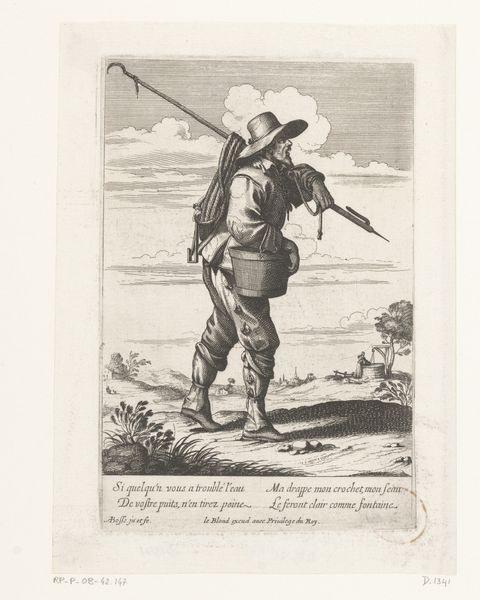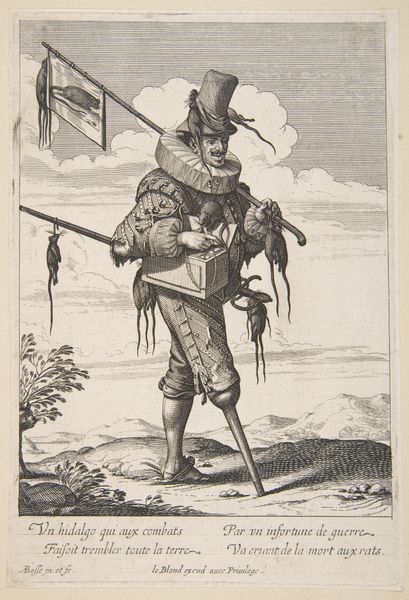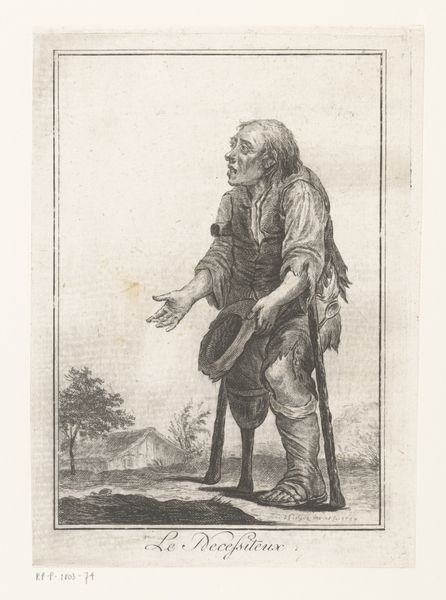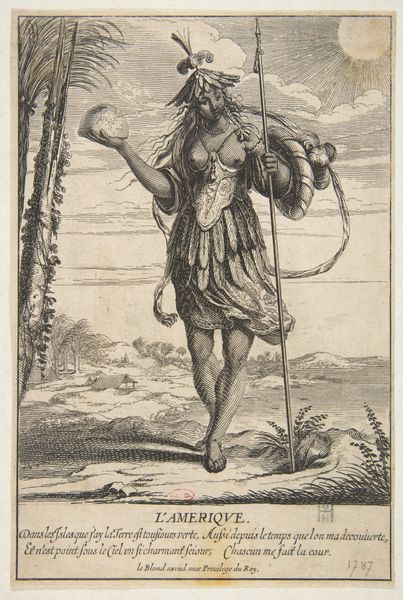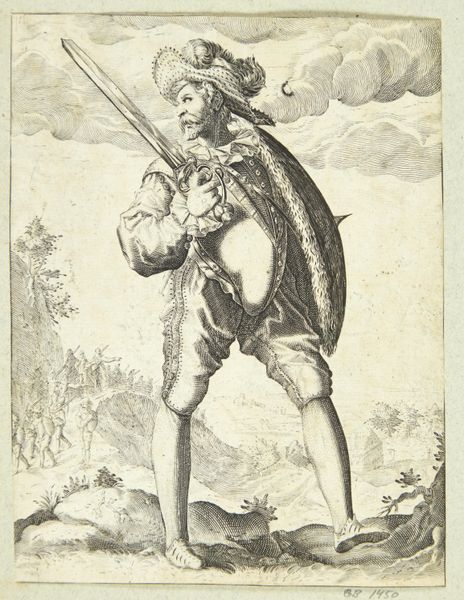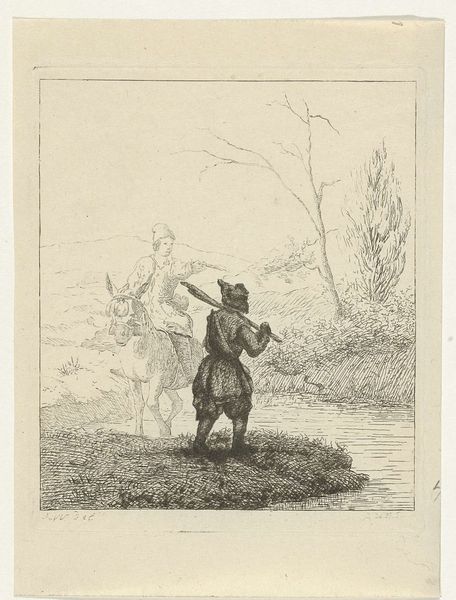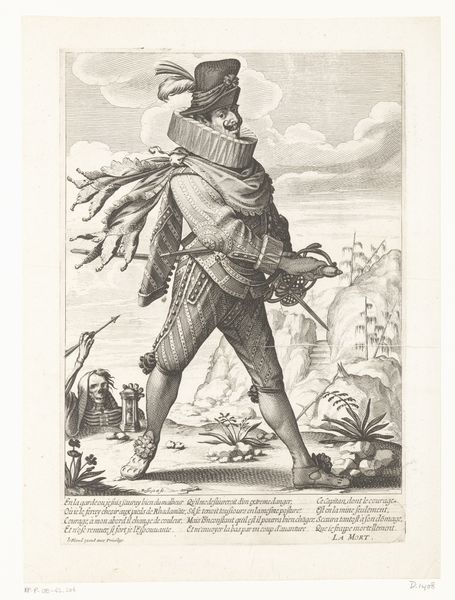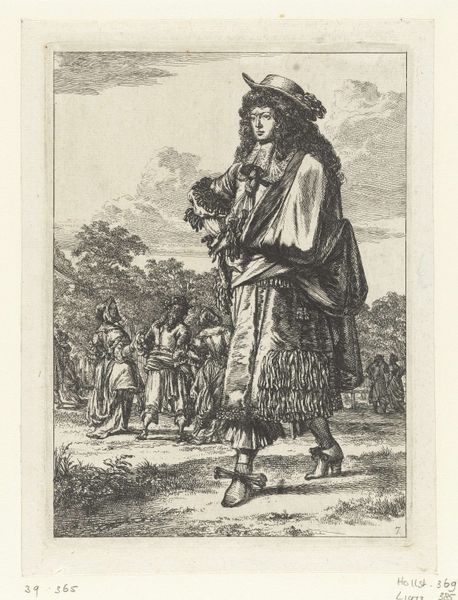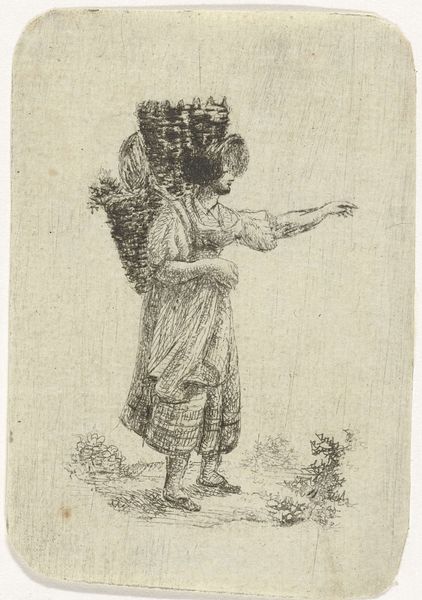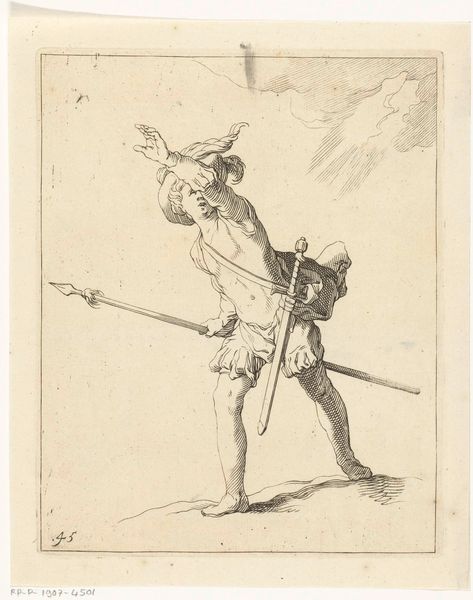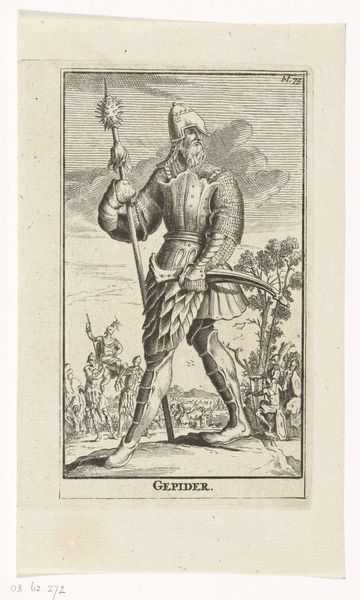
print, engraving
#
narrative-art
#
pen drawing
# print
#
pen illustration
#
landscape
#
figuration
#
line
#
history-painting
#
engraving
Dimensions: height 140 mm, width 88 mm
Copyright: Rijks Museum: Open Domain
Curator: Let's examine this print titled "Robinson Crusoe" crafted around 1720 by Bernard Picart, part of the Rijksmuseum collection. Editor: Immediately striking is the figure’s isolation and resilience, juxtaposed with the wildness of the island setting. There's a rawness conveyed through the engraving’s fine lines that echoes the protagonist’s struggle for survival. Curator: Precisely, Picart’s masterful use of line gives depth to Crusoe’s layered clothing and captures the nuances of the landscape. Observe the textures—the thatched umbrella, woven basket, and his resourceful, self-made attire, crafted from animal hides. Editor: And it speaks volumes about colonialism, doesn’t it? Crusoe is, in essence, an imperial archetype – alone yet attempting to rebuild his society and impose his values upon this untamed land. His ‘survival’ is intrinsically linked to dominance and resource extraction. Curator: Indeed, though looking solely at form, the figure occupies a deliberate central position in the composition. The strong verticals, especially in the lines of the umbrella and figure itself, counter the more chaotic horizontals of the landscape, establishing order. It suggests not just survival but mastery over his domain through rational thought. Editor: Rationality is key here. However, consider the native's absence from the narrative beyond Crusoe's one companion: where are the dispossessed people, those directly impacted? Its important to note whose stories were highlighted—and erased—during that time. Curator: Yes, acknowledging historical context brings additional readings. Purely through a formal lens, it’s intriguing how Picart’s graphic vocabulary – the economy of line, hatching – creates the illusion of a complex, fully-realized world. Editor: This visual economy also reflects a broader cultural context, shaping perception, reinforcing biases. Robinson Crusoe has influenced western attitudes, particularly those linked to race, for centuries, attitudes embedded in every stroke here. Curator: Analyzing this work proves enriching because the composition and line-work elevate our appreciation for printmaking of the time, it lets us see how the figure has been shaped artistically, while acknowledging, like you said, its wider and darker narratives. Editor: Indeed, engaging critically means exploring how this "image," beautiful as it might be technically, contributes to broader understanding on issues surrounding exploitation. Examining our histories must always remain relevant.
Comments
No comments
Be the first to comment and join the conversation on the ultimate creative platform.
